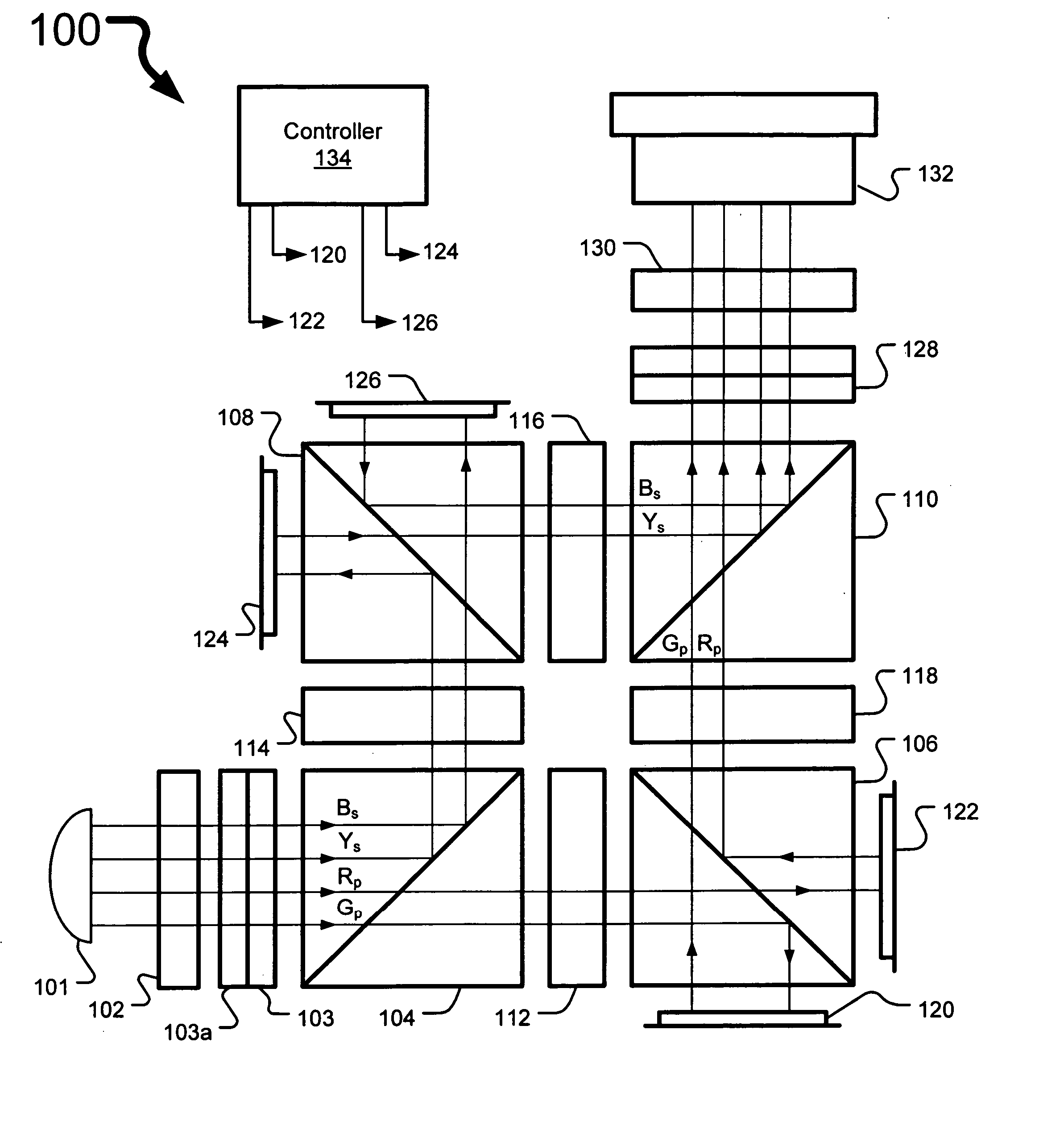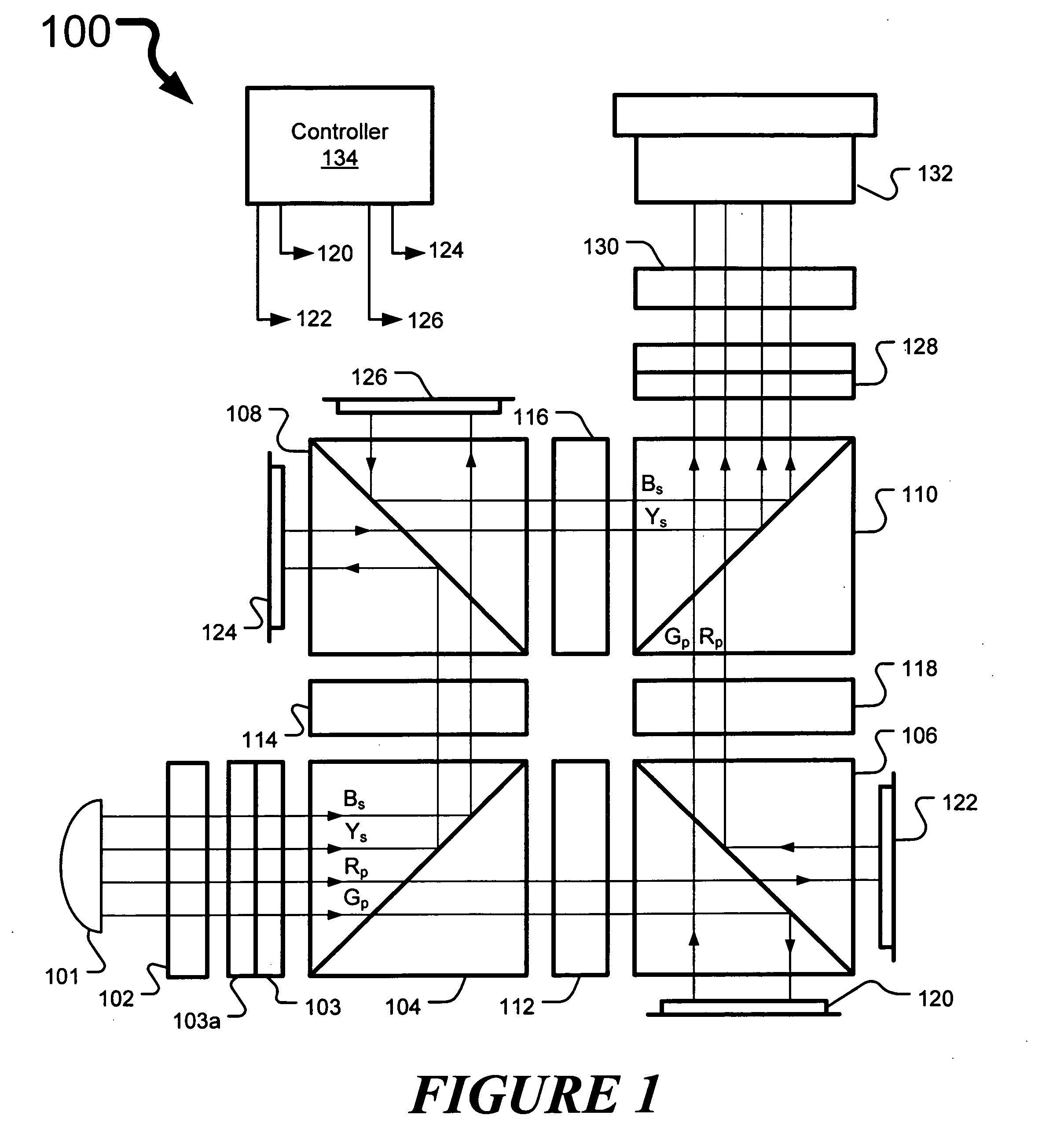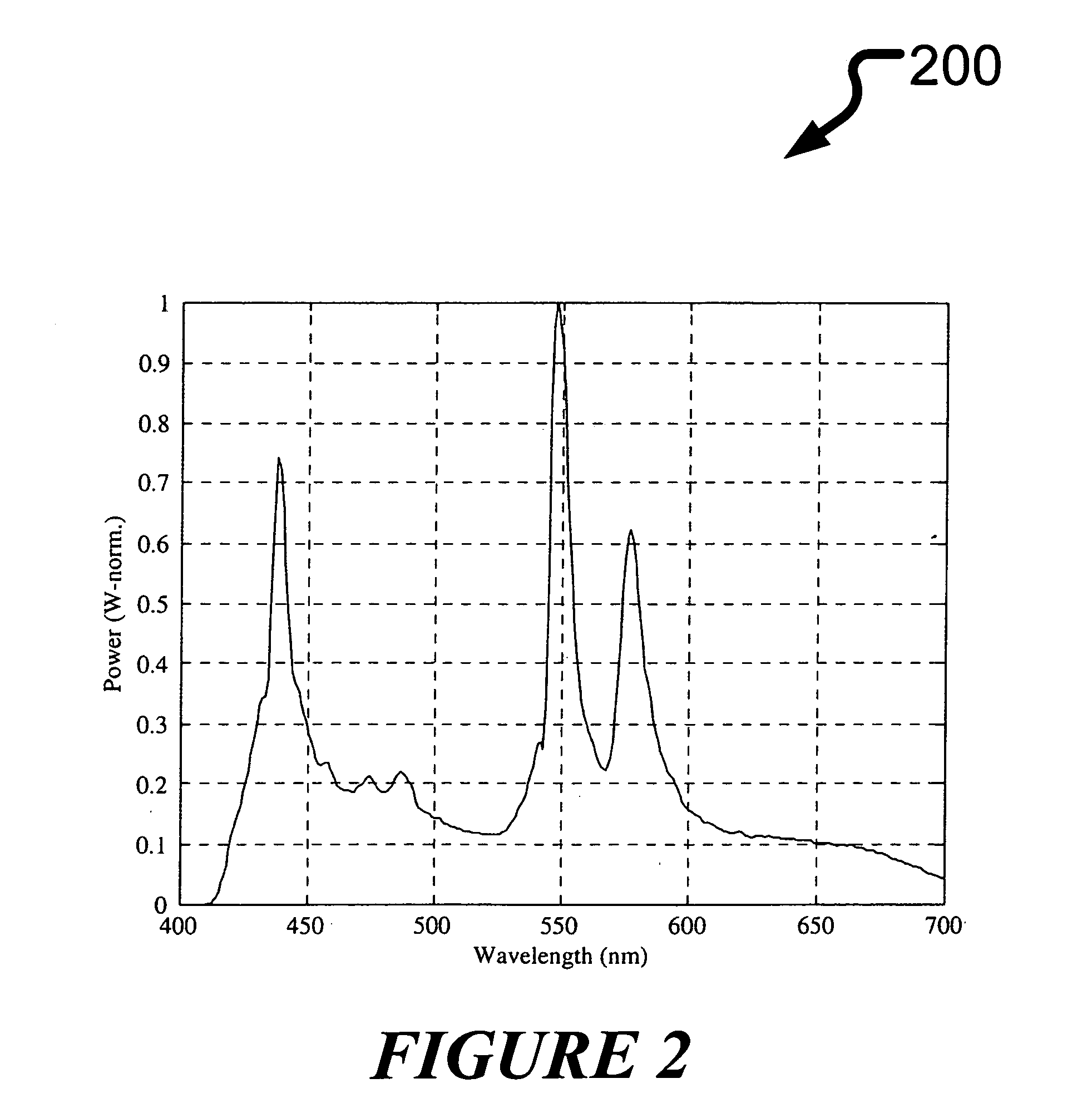Four panel projection system
a projection system and panel technology, applied in the field of four panel projection system, can solve the problems of reducing the brightness of uhp lamps, sacrificing color balance, and wasting color resources, so as to increase the color gamut, increase the transmission throughput, and increase the color brightness
- Summary
- Abstract
- Description
- Claims
- Application Information
AI Technical Summary
Benefits of technology
Problems solved by technology
Method used
Image
Examples
Embodiment Construction
[0018]FIG. 1 is a diagram that illustrates an embodiment of a four panel projection system 100. The four panel projection system 100 includes a light source 101, a pre-polarizer 102, wavelength-selective polarization filters 103, 103a, 112-118, an input beam splitter 104, polarizing beam splitters (PBS) 106-110, LCOS reflective panels 120-126, projection lens 132, and controller 134, arranged as shown. The four panel projection system 100 may also include exit wavelength-selective polarization filters 128a, 128, and / or polarization filter 130.
[0019] Light source 101 may be a standard UHP mercury illumination source, metal-halide source, a light emitting diode-based light source, a laser-based light source, a xenon light source, or any other light source that generates visible spectra with a plurality of color components. Controller 134 may provide control signals to panels 120-126 to modulate the respective color components with color component image information. Controller 134 may...
PUM
 Login to View More
Login to View More Abstract
Description
Claims
Application Information
 Login to View More
Login to View More - R&D
- Intellectual Property
- Life Sciences
- Materials
- Tech Scout
- Unparalleled Data Quality
- Higher Quality Content
- 60% Fewer Hallucinations
Browse by: Latest US Patents, China's latest patents, Technical Efficacy Thesaurus, Application Domain, Technology Topic, Popular Technical Reports.
© 2025 PatSnap. All rights reserved.Legal|Privacy policy|Modern Slavery Act Transparency Statement|Sitemap|About US| Contact US: help@patsnap.com



